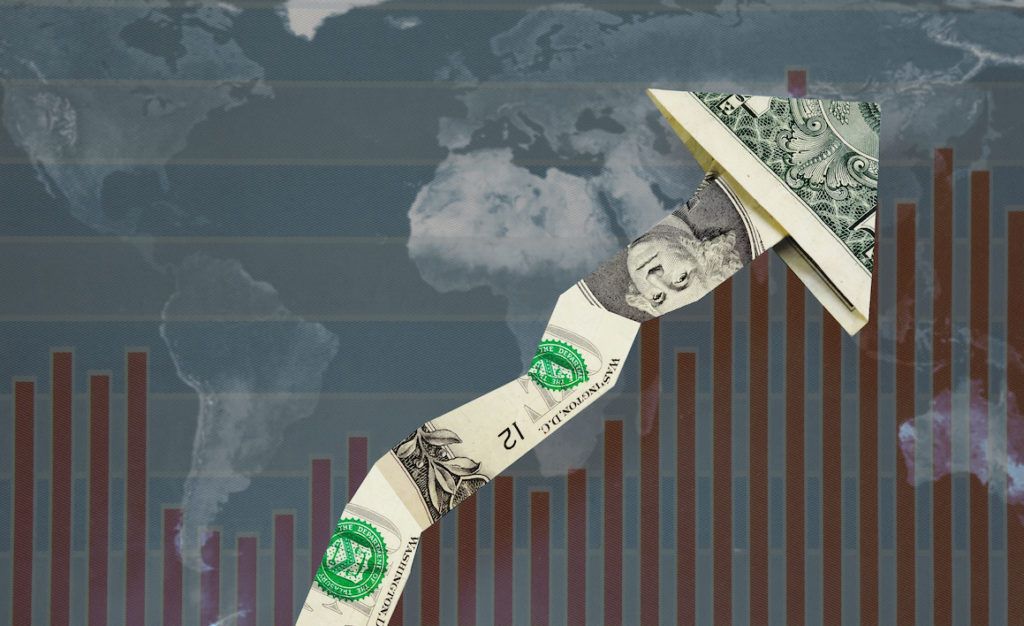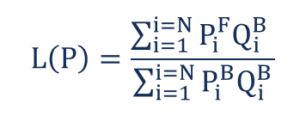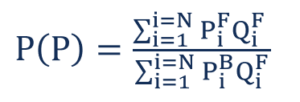how to find price index
What are Price Indices?
A price index (PI) is a measure of how prices change over a period of time, or in other words, it is a way to measure inflation Inflation Inflation is an economic concept that refers to increases in the price level of goods over a set period of time. The rise in the price level signifies that the currency in a given economy loses purchasing power (i.e., less can be bought with the same amount of money). . There are multiple methods on how to calculate inflation (or deflation Deflation Deflation is a decrease in the general price level of goods and services. Put another way, deflation is negative inflation. When it occurs, ). In this guide we will take a look at a couple of methods on how to do so. Inflation is one of the core metrics monitored by the FED Federal Reserve (The Fed) The Federal Reserve is the central bank of the United States and is the financial authority behind the world's largest free market economy. in order to set interest rates Interest Rate An interest rate refers to the amount charged by a lender to a borrower for any form of debt given, generally expressed as a percentage of the principal. .

The general formula for the price index is the following:
PI1,2 = f(P1,P2,X)
Where:
- PI1,2: Some PI that measures the change in price from period 1 to period 2
- P1: Price of goods in period 1
- P2: Price of goods in period 2
- X: Weights (the weights are used in conjunction with the prices)
- f: General function
Laspeyres Price Index
Ernst Louis Etienne Laspeyres (1834-1913) was a German economist and statistician. Laspeyres's main contribution to economics and statistics was his work on index numbers and calculating inflation Inflation Inflation is an economic concept that refers to increases in the price level of goods over a set period of time. The rise in the price level signifies that the currency in a given economy loses purchasing power (i.e., less can be bought with the same amount of money). . The formula for Laspeyres Price Index is as follows:

Where:
- Pi B: The price of good i in the Base period
- Pi F: The price of good i in the Final period
- Qi B: The quantity consumed of good i in the Base period
- Qi F: The quantity consumed of good i in the Final period
The Laspeyres PI weighs prices (both Base period prices and Final period prices) with base period quantities. Consider an economy with N goods and services. The numerator in the Laspeyres price index calculates nominal expenditure required to consume base period quantity at final period prices. The denominator calculates nominal GDP Gross Domestic Product (GDP) Gross domestic product (GDP) is a standard measure of a country's economic health and an indicator of its standard of living. Also, GDP can be used to compare the productivity levels between different countries. in the base period.
Paasche Price Index
Hermann Paasche (1851-1925) was a German economist and statistician. Paasche's main contribution to economics What is Economics? Economics comes from the ancient Greek word oikonomikos or oikonomia. Oikonomikos literally translates to the task of managing a and statistics was his work on wage inflation.
The formula for the Paasche Price Index is as follows:

Where:
- Pi B: The price of good i in the Base period
- Pi F: The price of good i in the Final period
- Qi B: The quantity consumed of good i in the Base period
- Qi F: The quantity consumed of good i in the Final period
Paasche PI weighs prices (both Base period prices and Final period prices) with Final period quantities. Consider an economy with N goods and services. The numerator calculates nominal GDP in the Final period. The denominator in the price index calculates nominal expenditure required to consume Final period quantities at Base period prices.
Marshall-Edgeworth Index
Alfred Marshall (1842-1924) was an English economist who is widely considered to be the father of modern neoclassical economics. Marshall's book, Principles of Economics (1890), is one of the most influential textbooks in the history of economic thought. Francis Ysidro Edgeworth (1845-1926) was an Anglo-Irish economist and philosopher. Edgeworth was one of the earliest proponents of using statistics Basic Statistics Concepts for Finance A solid understanding of statistics is crucially important in helping us better understand finance. Moreover, statistics concepts can help investors monitor to analyze economic questions.
The formula for the Marshall-Edgeworth Price Index is as follows:

Where:
- L(P): The Laspeyres Price Index
- P(P): The Paasche Price Index
The Marshall-Edgeworth Price Index is the arithmetic mean (simple average) of the Laspeyres Price Index and the Paasche Price Index.
Fisher Price Index
Irving Fisher (1867-1947) was an American economist and statistician. Fisher was one of the earliest neoclassical economists in the US and is known as the first econometrician (application of linear regression to economic theory). The American worked on many areas of economics, including trade, monetary theory, and inflation measurement.
The formula for the Fisher Price Index is as follows:
![]()
The Fisher Price Index is the geometric mean of the Laspeyres Price Index and the Paasche Price Index.
Illustrative Example
| Commodity | Base Price (PB) | Base Quantity (QB) | Final Price (PF) | Final Quantity (QF) |
|---|---|---|---|---|
| 1 | 10 | 1000 | 14 | 800 |
| 2 | 12 | 2000 | 16 | 1500 |
| 3 | 30 | 500 | 30 | 450 |
| 4 | 35 | 5000 | 30 | 8000 |
| 5 | 40 | 400 | 45 | 150 |
| 6 | 100 | 350 | 150 | 200 |
| 7 | 2500 | 100 | 2000 | 200 |
| 8 | 55 | 1000 | 50 | 2000 |
| 9 | 10000 | 25 | 10500 | 25 |
| 10 | 25 | 4000 | 40 | 3000 |
| Price Index | Numerical Value |
|---|---|
| Laspeyres Price Index | 1.025806452 |
| Paasche Price Index | 0.943342444 |
| Marshall-Edgeworth Price Index | 0.984574448 |
| Fisher Price Index | 0.983710712 |
Additional Resources
CFI is the official provider of the Financial Modeling and Valuation Analyst (FMVA)™ Become a Certified Financial Modeling & Valuation Analyst (FMVA)® CFI's Financial Modeling and Valuation Analyst (FMVA)® certification will help you gain the confidence you need in your finance career. Enroll today! certification program, designed to transform anyone into a world-class financial analyst.
To keep learning and developing your knowledge of financial analysis, we highly recommend the additional CFI resources below:
- Phillips Curve Phillips Curve The Phillips Curve is the graphical representation of the short-term relationship between unemployment and inflation within an economy
- Price Floors and Ceilings Price Floors and Ceilings Price floors and price ceilings are government-imposed minimums and maximums on the price of certain goods or services. It is usually done to
- Profitability Index Profitability Index The Profitability Index (PI) measures the ratio between the present value of future cash flows to the initial investment. The index is a
- Technical Analysis – A Beginner's Guide Technical Analysis - A Beginner's Guide Technical analysis is a form of investment valuation that analyses past prices to predict future price action. Technical analysts believe that the collective actions of all the participants in the market accurately reflect all relevant information, and therefore, continually assign a fair market value to securities.
how to find price index
Source: https://corporatefinanceinstitute.com/resources/knowledge/finance/price-indices/
Posted by: rogersnabowle.blogspot.com

0 Response to "how to find price index"
Post a Comment